Do we need to lose an obsession with change?
Are marketers too focused on what is changing in the world? Yes, according to a fascinating post by BBH-Labs entitled ‘Charts that Don’t Change: In Praise of Dull Data.’ (1) “Our industry is not merely interested in change. It is obsessed with it,” suggest the authors.“Change is to marketers what lightbulbs are to moths. We fixate upon emerging behaviours and fantasise about ‘new normals’.”
So, are marketers change junkies who need to ‘kick the habit’ and re-focus instead on fundamentals?
EVERYTHING is changing
On the one hand, the world IS changing. And changing at a pace that can leave you feeling faint.
Tik Tok was relatively unheard in early 2018 with 55 million monthly active users worldwide. By the end of 2021, its user base had grown almost 20 times to 1 billion (2).
Chinese online fast fashion retailer Shein was forecast to double its gross merchandise value sales in 2021 to $20billion (3).
Looking back through a longer lens, it is amazing to list the things that were not even launched when I started the brandgym back in 2002. Facebook (2004), the iTunes store (2003) and the iPhone (2007) are just three that come to mind.
This sort of tumultuous change could encourage you to forget the concept of ‘fresh consistency’ and go instead for ‘fresh fresh fresh’! But that would be a mistake.
Separating the HOW from the WHY
Today’s marketers do need to be agile to respond rapidly to changes in both retail and communication channels. But we need to separate the HOW brands are delivered versus WHY they are bought. As I said in a post on change in the middle of the Covid crisis back in 2020, “HOW we consume products and services may change significantly, WHY we consume brands is likely to change more slowly,”. I drew on data from Reach Solutions (4) showing how deep emotional needs were similar to those two years earlier in pre-Covid times (see below).
The BBH-Labs post confirms this view. It shows that most fundamental attitudes have NOT changed in the last 20 years, by analysing TGA surveys of the British public on 139 topics.
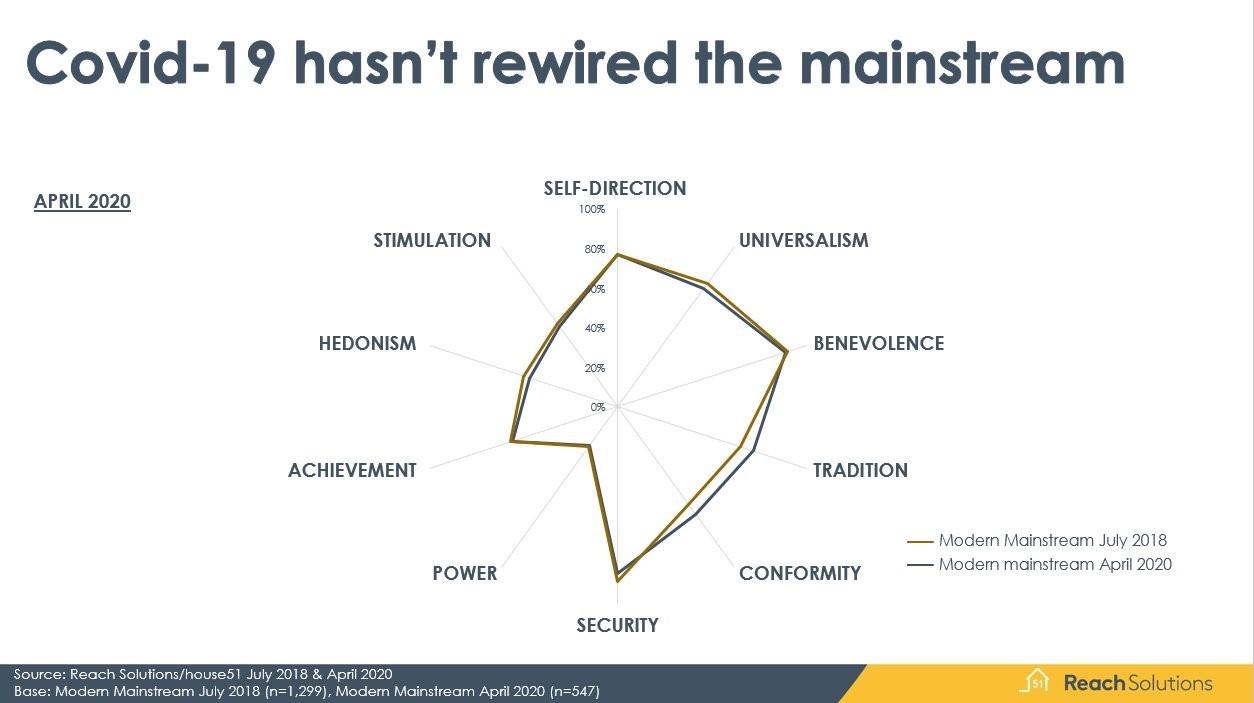
Most fundamentals stay the SAME
The first striking finding is how few topics saw big changes in opinion over the 20 years from 2000 to 2020:
- Less than 5% points change: 45% of topics
- Less than 10% points change: 74% of topics
“By focusing only on those elements that change dramatically, marketers are ignoring at least half, if not three-quarters, of all consumer information,” point out the authors. “As a result, we’re ignoring the dullest, yet often most useful, data: the numbers that haven’t moved in decades.”
Here are a few snapshots of fundamental attitudes that have stayed stable during the turbulent times we’ve lived through since 2000 (all charts BBH-Labs using TGI).
The importance of FAMILY
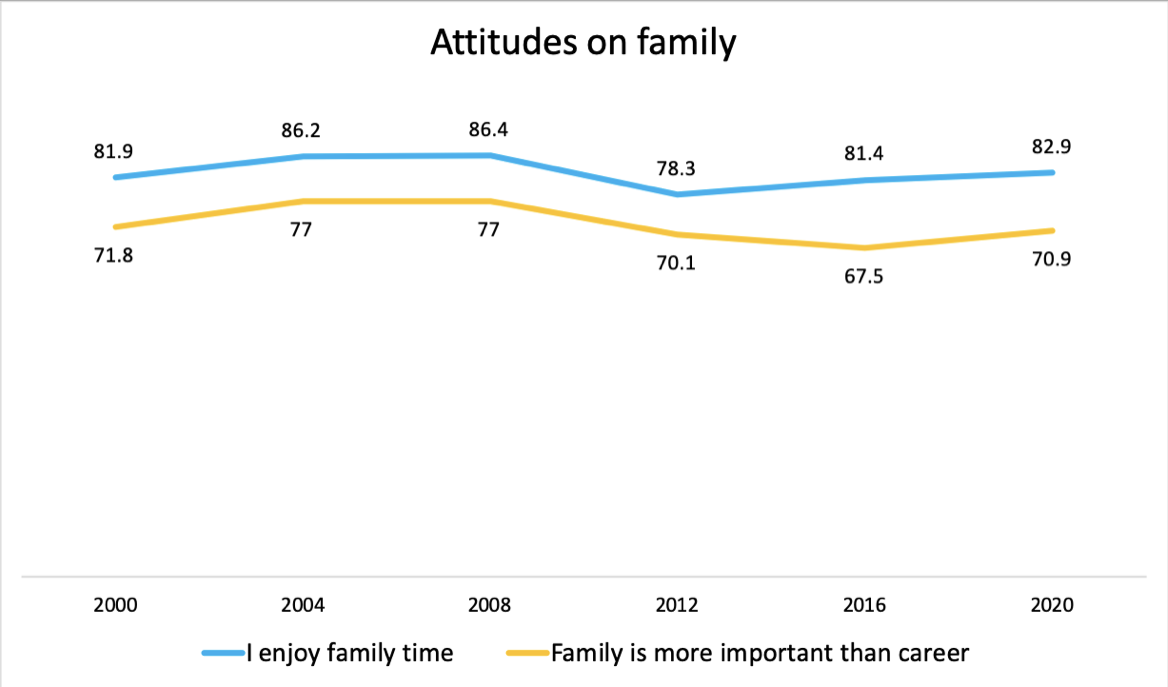
Wanting to look YOUNG. And have a TIDY house
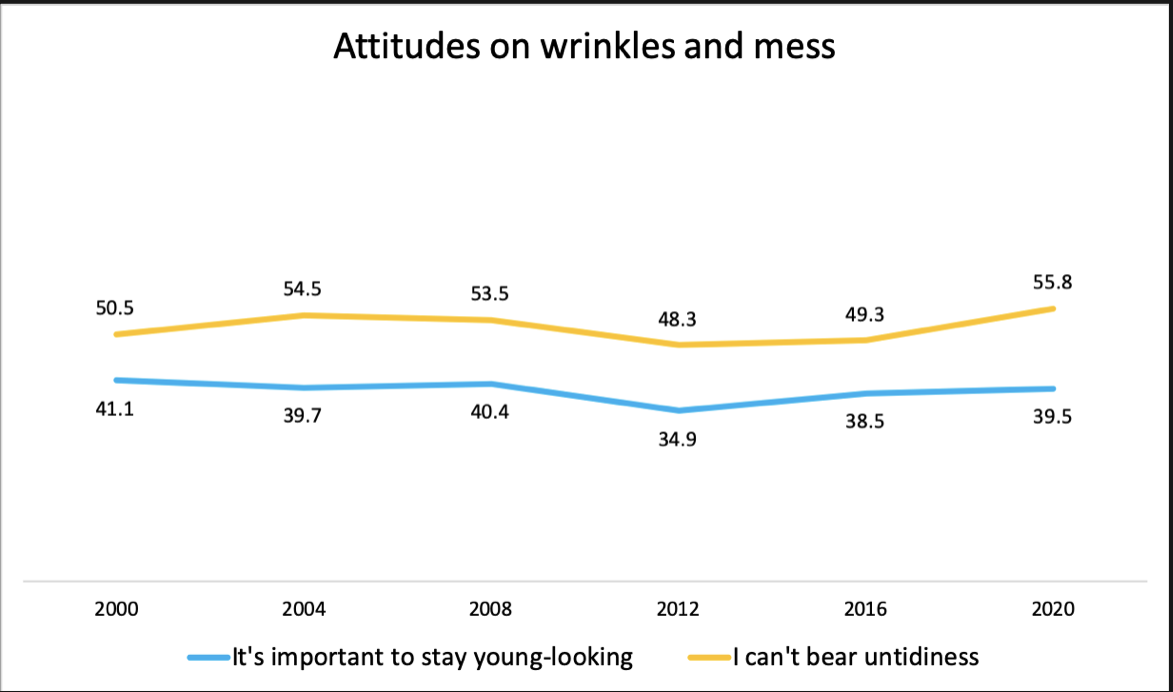
Desire to DINE out
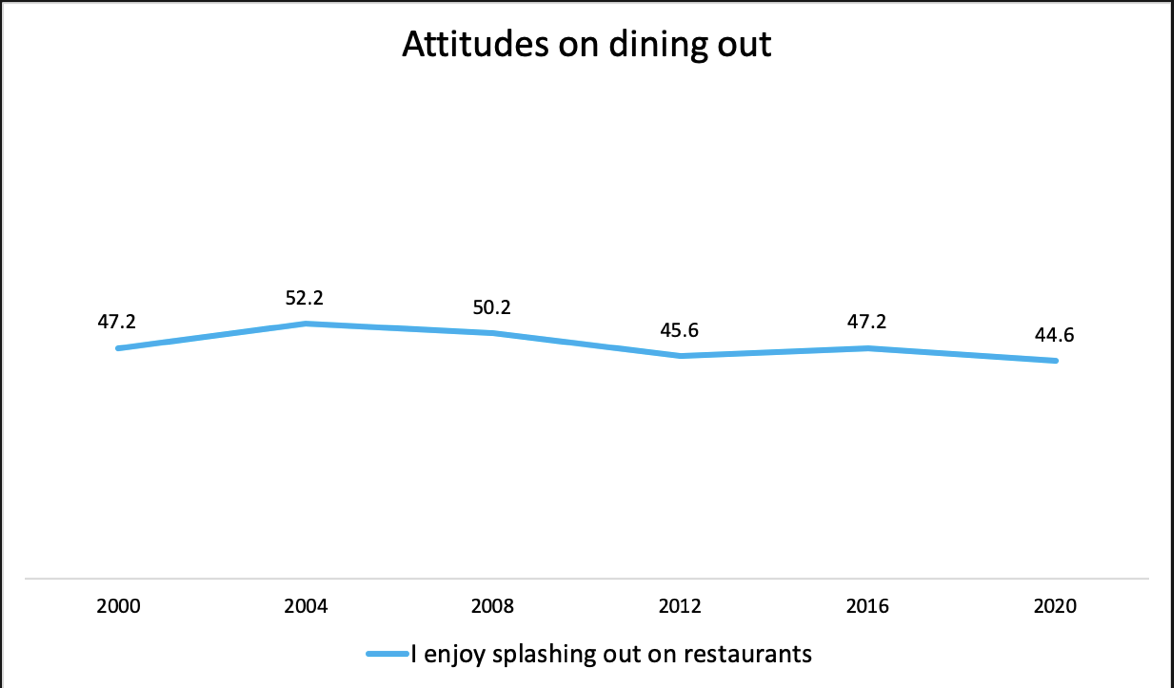
One big shift: SAVING MONEY
A need to save money is one big shift that is likely to continue given current economic pressures. ‘Looking for low prices’ and ‘Looking for special offers’ are two attitudes to see big changes over the last 20 years.
The data on ‘Stocks & shares are too risky’ show one watch out is the need to dig into data to highlight any differences by sub-group. Whilst the overall score for this topic has gone up, the locked down times of 2020 and 2021 saw rapid growth in risky ‘day trading’ with younger people. “Free trading app Robinhood has added more than three million accounts in 2020, and now has over 13 million. The median age of its customers is 31,” reported Barrons.com (5).
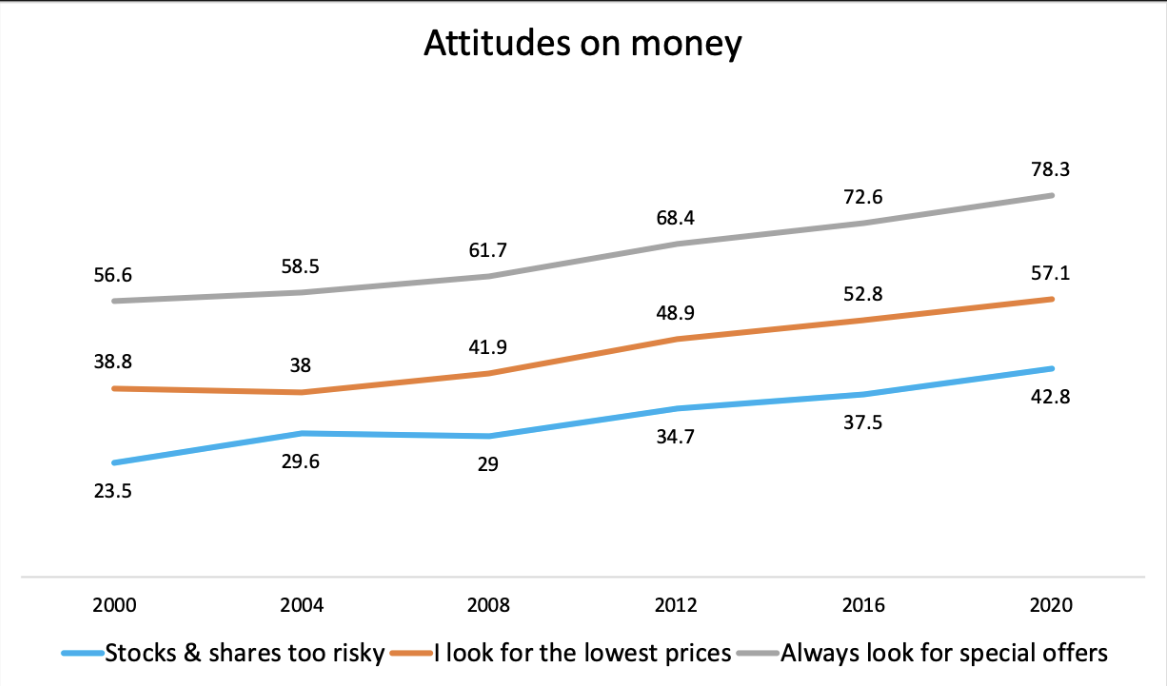
In conclusion, we need to separate the HOW brands are delivered from the WHY of fundamental human needs. The marketer of today does need to be much more able to respond quickly to changes in communication and retail channels. But when it comes to brand purpose and positioning, we should beware of changing tack too quickly. As BBH-Labs rightly say, “Flat charts indicate an unchanging truth. And that is something you can build a brand upon.”
Sources:
1. BBH-Labs: Charts that Don’t Change: In Praise of Dull Data
2. Tik Tok MAU


